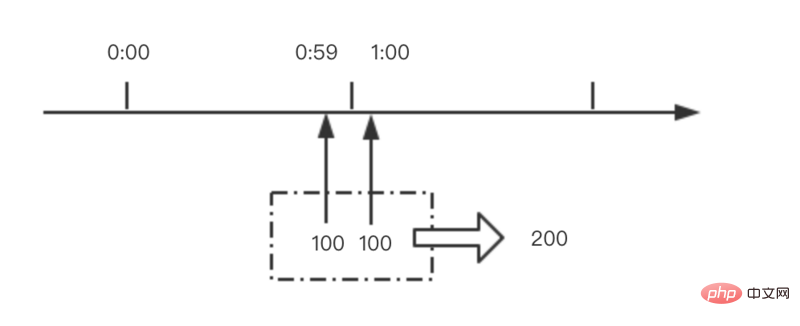 Operation and Maintenance
Operation and Maintenance Nginx
Nginx Nginx reverse proxy cache configuration to accelerate static web page access
Nginx reverse proxy cache configuration to accelerate static web page accessNginx reverse proxy cache configuration to achieve static web page access acceleration
Introduction:
With the rapid development of the Internet, access speed has become a very important factor in website operations. In order to improve the access speed of web pages, we can use Nginx reverse proxy caching technology to accelerate web pages. This article will introduce how to use Nginx to configure reverse proxy cache to accelerate static web pages.
Nginx reverse proxy cache configuration:
- Install Nginx:
First you need to install the Nginx server, which can be installed through package management tools such as apt-get and yum. - Configure Nginx reverse proxy:
Open the Nginx configuration file (usually located in /etc/nginx/nginx.conf) and find the configuration of the server part. Add the following code under server:
location / {
proxy_pass http://backend;
proxy_cache my_cache;
proxy_cache_valid 200 304 12h;
proxy_cache_valid any 5m;
proxy_cache_key $host$scheme$request_uri;
proxy_cache_use_stale error timeout invalid_header updating http_500 http_502 http_503 http_504;
proxy_cache_background_update on;
proxy_cache_lock on;
proxy_cache_lock_timeout 5s;
proxy_cache_lock_age 10s;
proxy_ignore_headers Cache-Control;
proxy_ignore_headers Set-Cookie;
proxy_ignore_headers Expires;
add_header X-Proxy-Cache $upstream_cache_status;
}Explain the above configuration:
-
proxy_pass: Specify the backend server address of the reverse proxy, which can be Local port number or domain name. -
proxy_cache: Specifies the name of the cache, which needs to be defined separately in the Nginx configuration file. -
proxy_cache_valid: Specify the validity time of cached data. Here, the cache time for 200 and 304 status codes is set to 12 hours, and the cache time for other status codes is 5 minutes. -
proxy_cache_key: Specifies the unique identifier of the cached data, which is generated using the domain name, protocol and request URI. -
proxy_cache_use_stale: Set whether to use expired cache when the backend server fails. -
proxy_cache_background_update: Set whether to update cache data in the background. -
proxy_cache_lock: Set whether to enable cache lock to avoid multiple requests updating the cache at the same time. -
proxy_ignore_headers: Set ignored response headers, Cache-Control, Set-Cookie and Expires are ignored here. -
add_header: Add response header to display cache hit status.
- Configure Nginx cache:
Open the main configuration file of Nginx and add the following code in the configuration of the http part:
proxy_cache_path /path/to/cache levels=1:2 keys_zone=my_cache:50m inactive=24h max_size=500m;
Explain the above configuration:
-
proxy_cache_path: Specify the cache path, cache level, cache area, inactivity time and maximum cache size.
- Restart the Nginx server:
After completing the above configuration, save and exit the configuration file, and restart the Nginx server through the following command:
sudo service nginx restart
Example results:
After the above configuration, when a user accesses a website, Nginx will make a judgment based on the cache settings. If there is a corresponding static web page file in the cache, the cached data will be returned directly, thus realizing the acceleration of the web page.
Conclusion:
Through the configuration of Nginx reverse proxy cache, we can quickly accelerate access to static web pages. By properly configuring parameters such as cache validity period, cache key, and cache path, the access speed and user experience of web pages can be further improved. At the same time, Nginx reverse proxy cache can also reduce the load on the back-end server and improve the stability and reliability of the system.
Summary:
This article introduces how to use Nginx reverse proxy cache configuration to accelerate access to static web pages. With proper configuration, the access speed of the website can be improved and the load on the back-end server can be reduced. We hope that readers can configure it according to their own needs based on the sample code provided in this article, thereby improving the performance and user experience of the website.
The above is the detailed content of Nginx reverse proxy cache configuration to accelerate static web page access. For more information, please follow other related articles on the PHP Chinese website!
 内存飙升!记一次nginx拦截爬虫Mar 30, 2023 pm 04:35 PM
内存飙升!记一次nginx拦截爬虫Mar 30, 2023 pm 04:35 PM本篇文章给大家带来了关于nginx的相关知识,其中主要介绍了nginx拦截爬虫相关的,感兴趣的朋友下面一起来看一下吧,希望对大家有帮助。
 nginx限流模块源码分析May 11, 2023 pm 06:16 PM
nginx限流模块源码分析May 11, 2023 pm 06:16 PM高并发系统有三把利器:缓存、降级和限流;限流的目的是通过对并发访问/请求进行限速来保护系统,一旦达到限制速率则可以拒绝服务(定向到错误页)、排队等待(秒杀)、降级(返回兜底数据或默认数据);高并发系统常见的限流有:限制总并发数(数据库连接池)、限制瞬时并发数(如nginx的limit_conn模块,用来限制瞬时并发连接数)、限制时间窗口内的平均速率(nginx的limit_req模块,用来限制每秒的平均速率);另外还可以根据网络连接数、网络流量、cpu或内存负载等来限流。1.限流算法最简单粗暴的
 nginx php403错误怎么解决Nov 23, 2022 am 09:59 AM
nginx php403错误怎么解决Nov 23, 2022 am 09:59 AMnginx php403错误的解决办法:1、修改文件权限或开启selinux;2、修改php-fpm.conf,加入需要的文件扩展名;3、修改php.ini内容为“cgi.fix_pathinfo = 0”;4、重启php-fpm即可。
 nginx+rsync+inotify怎么配置实现负载均衡May 11, 2023 pm 03:37 PM
nginx+rsync+inotify怎么配置实现负载均衡May 11, 2023 pm 03:37 PM实验环境前端nginx:ip192.168.6.242,对后端的wordpress网站做反向代理实现复杂均衡后端nginx:ip192.168.6.36,192.168.6.205都部署wordpress,并使用相同的数据库1、在后端的两个wordpress上配置rsync+inotify,两服务器都开启rsync服务,并且通过inotify分别向对方同步数据下面配置192.168.6.205这台服务器vim/etc/rsyncd.confuid=nginxgid=nginxport=873ho
 如何解决跨域?常见解决方案浅析Apr 25, 2023 pm 07:57 PM
如何解决跨域?常见解决方案浅析Apr 25, 2023 pm 07:57 PM跨域是开发中经常会遇到的一个场景,也是面试中经常会讨论的一个问题。掌握常见的跨域解决方案及其背后的原理,不仅可以提高我们的开发效率,还能在面试中表现的更加
 nginx部署react刷新404怎么办Jan 03, 2023 pm 01:41 PM
nginx部署react刷新404怎么办Jan 03, 2023 pm 01:41 PMnginx部署react刷新404的解决办法:1、修改Nginx配置为“server {listen 80;server_name https://www.xxx.com;location / {root xxx;index index.html index.htm;...}”;2、刷新路由,按当前路径去nginx加载页面即可。
 nginx怎么禁止访问phpNov 22, 2022 am 09:52 AM
nginx怎么禁止访问phpNov 22, 2022 am 09:52 AMnginx禁止访问php的方法:1、配置nginx,禁止解析指定目录下的指定程序;2、将“location ~^/images/.*\.(php|php5|sh|pl|py)${deny all...}”语句放置在server标签内即可。
 Linux系统下如何为Nginx安装多版本PHPMay 11, 2023 pm 07:34 PM
Linux系统下如何为Nginx安装多版本PHPMay 11, 2023 pm 07:34 PMlinux版本:64位centos6.4nginx版本:nginx1.8.0php版本:php5.5.28&php5.4.44注意假如php5.5是主版本已经安装在/usr/local/php目录下,那么再安装其他版本的php再指定不同安装目录即可。安装php#wgethttp://cn2.php.net/get/php-5.4.44.tar.gz/from/this/mirror#tarzxvfphp-5.4.44.tar.gz#cdphp-5.4.44#./configure--pr


Hot AI Tools

Undresser.AI Undress
AI-powered app for creating realistic nude photos

AI Clothes Remover
Online AI tool for removing clothes from photos.

Undress AI Tool
Undress images for free

Clothoff.io
AI clothes remover

AI Hentai Generator
Generate AI Hentai for free.

Hot Article

Hot Tools

Safe Exam Browser
Safe Exam Browser is a secure browser environment for taking online exams securely. This software turns any computer into a secure workstation. It controls access to any utility and prevents students from using unauthorized resources.

PhpStorm Mac version
The latest (2018.2.1) professional PHP integrated development tool

ZendStudio 13.5.1 Mac
Powerful PHP integrated development environment

SublimeText3 Linux new version
SublimeText3 Linux latest version

Notepad++7.3.1
Easy-to-use and free code editor





